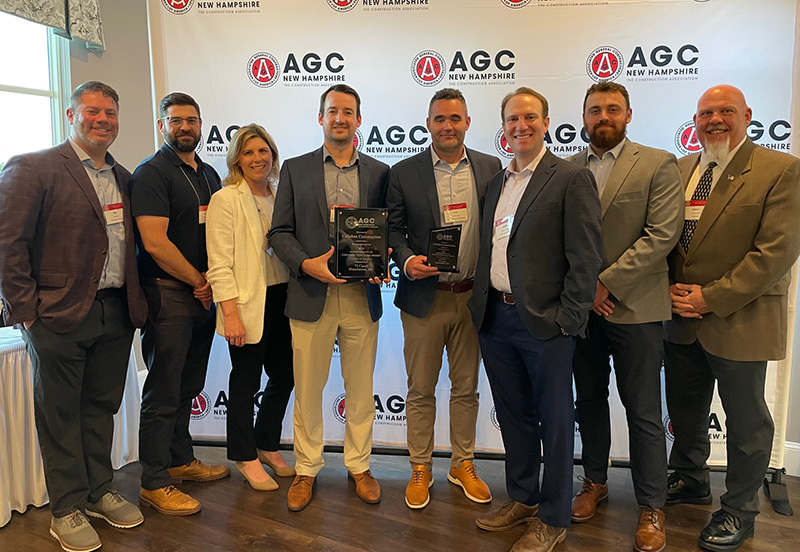News: Construction Design & Engineering
Posted: February 17, 2011
How to utilize the federal rehabilitation tax credit (RTC) for your older building
Are you considering rehabilitating an older building? Current federal tax law provides incentives for preserving, renovating, or reconstructing older buildings in the form of the rehabilitation tax credit (RTC). The RTC can provide you with a dollar-for-dollar tax credit against federal taxes owed. This is a per project credit based on a fixed percentage of the rehabilitation costs. The availability of the RTC can help subsidize the cost of any rehab whether the credits are used by the developer or used to help lure equity investors.
To qualify for the RTC, the building must qualify as a qualified rehabilitated building (QRB). A QRB is a certified historic structure or a pre-1936 building on which depreciation is allowable, has been substantially rehabilitated, and was placed in service prior to the beginning of the rehabilitation. A certified historic structure is defined as a building which is either listed in the National Register or located in a registered historic district that is certified by the Secretary of the Interior or under a statute of the appropriate state or local government. It should be noted that if the QRB is a pre-1936 building but not a certified historic structure, 50% or more of the existing external walls must be retained in place as external walls, 75% or more of the existing external walls must be retained in place as internal or external walls, and 75% or more of the existing internal structural framework must be retained in place during the rehabilitation process.
A building is considered to be substantially rehabilitated if the qualified rehabilitation expenses ("QRE") incurred materially extend the useful life of the building, significantly upgrade the building's usefulness, or preserve it in a manner which significantly improves its condition or historic value. The QRE's must be more than the greater of $5,000 or the adjusted basis in your building and must be incurred within a 24 month measurement period. A QRE is defined as an expenditure made in connection with the rehabilitation of a QRB that must be capitalized and depreciated using the straight-line method. It does not include acquisition costs, costs to enlarge the building, or cost incurred on tax-exempt use property. Additionally, there are certification requirements for certified historic structures. These certification requirements include certification by the Secretary of the Interior which deems the rehabilitation consistent with the historic character of the property.
If your rehabilitation expenditures meet the above requirements, you will be eligible for a 10% credit if the building is a pre-1936 structure or a 20% credit if the building is a certified historic property. The amount of the credit is calculated by multiplying the applicable percentage by the QRE's. The basis of the building is then reduced by the credit. Typically, the credit is claimed in the year that the QRB is placed in service and is available to a taxpayer with an appropriate ownership interest at the time the building is placed in service. It is important to note that the credit is subject to recapture if the building is disposed of or if a partner disposes of a substantial part of its interest within 5 years of being placed in service. The recapture amount is reduced by 20% for each year the building is held.
The RTC is considered a general business credit that usually cannot offset an AMT liability. However, for tax years beginning in 2010, an eligible small business may use the RTC, related to QRE's incurred for periods after December 31, 2007, to offset an AMT liability. An eligible small business is a sole proprietor, partnership, or a non-publicly traded corporation that meets the $5 million gross receipts test. The RTC is also a passive activity credit that can be limited under the passive activity loss rules. This credit may only offset a passive taxpayer's tax liability to the extent of passive income. However, there are exceptions to the passive activity rules. Passive activities credits that cannot be used are suspended and carried forward.
There are planning opportunities available when there is a limited ability to use the rehabilitation tax credits or a lack of funding for the project. A potential opportunity is to have an equity partner who can use the credits contribute funds into a partnership in return for an allocation of the credit. This is a useful technique to raise capital to fund the rehabilitation.
Jonathan Farrell, CPA, is a principal in the real estate group at DiCicco, Gulman & Co., Woburn, Mass.
MORE FROM Construction Design & Engineering
Nobis Group awards Robinson and Moreira STEM scholarships
Concord, NH Nobis Group, a 100% employee-owned consulting firm specializing in engineering and environmental solutions across the Northeast, has named the recipients of its 2025 STEM Scholarship: Andie Moreira of

Quick Hits
Columns and Thought Leadership

The rise of incubators and co-working spaces: The latest in life sciences - by Matt Combs
In recent years, the life science industry has witnessed a shift in how companies operate and innovate. One of the key driving forces behind this transformation is the emergence of incubators and co-working spaces specifically tailored to meet the unique budget and schedule needs of startups.

Ask the Electrician: Is summer a prime time for commercial electrical maintenance?
The answer is “Yes!” While January marks the official new year, many businesses view September as a fresh start. This makes summer an ideal time for commercial property owners to schedule long-term electrical maintenance projects.

The design-build advantage: Integrated interior design solutions - by Parker Snyder
When it comes to corporate interior spaces for both commercial and industrial projects, partnering with a design-build firm with in-house interior design services can offer clients many benefits. Unlike traditional delivery methods where interior designers operate independently from the design and construction teams, often creating a longer project timeline as cost negotiations and revisions ensue

Careers in Construction Month focus on training and safety - by Joe Camilo
October is Careers in Construction Month, and rarely has it been more consequential. According to our chapter’s national parent organization, the construction industry needs to attract half-a-million new workers in the coming year to meet demand. Addressing that need is a huge job, but we at ABC MA are trying to do our part.







